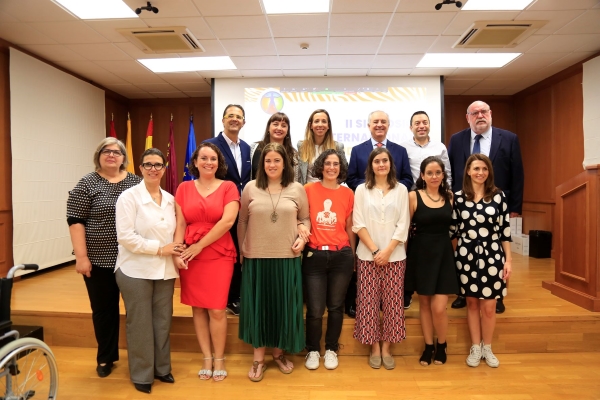Further genetic studies are needed for a better approach to rare diseases
Juan Carrión, President of D'Genes, recalled that the associative movement can help make rare diseases a priority for the health system
On the second day of the XV International Conference on Rare Diseases
D'Genes - UCAM, the implementation of genetic studies on an equal nationwide
basis, and within the European framework, was highlighted as a priority. This event,
with the theme Equity and Rights for People with Rare Diseases,
underlined the need for a plan to carry out genetic testing on all people with
rare diseases when it comes to treating or researching rare diseases.
Mónica Povedano, Director of the Motoneurone Functional Unit and Head of
the Neurophysiology Section at the Neurology Service at Bellvitge Hospital
(Barcelona), insisted on the need to carry out genetic studies in the case of
ALS patients in her presentation: ‘We talk about equity, and in our country
this is not being done equally, as there are areas where these studies are done
and others where they are not. By doing so, we would work better and have
more therapeutic targets to be more effective’.
Juan Carrión, President of the D'Genes Rare Diseases Association, gave a
positive assessment of a conference that was attended by more than 400
participants (nearly 300 in person and more than a hundred online) and
recalled that ‘the associative movement has a crucial role to play in social
transformation and in ensuring that these diseases are incorporated as a health
priority in our health system’.
Up to ten years to diagnose Ehlers-Danlos Syndrome
At the same time as the conference, the II International Symposium on
Ehlers-Danlos and Hyperlaxity Syndromes was held. This is a rare disease
characterised by extremely loose or lax joints and very elastic skin, with blood
vessels that are easily damaged.

María Ángeles Díaz, President of the National Association for Ehlers-
Danlos Syndrome, Hyperlaxity and Collagenopathies, commented that they
have 306 members, even though there are others who suffer from it but have
not yet been diagnosed. This is precisely on this she presented one of the main
problems associated with the disease: ‘We need doctors to be trained and to
learn how to diagnose, because there is a diagnostic delay in this disease of
about 10 years, which is a very long period in terms of visits to specialists and
tests. We also need further research. The Ehlers-Danlos syndrome, the
hypermobile syndrome, which is the most common, does not have an
associated gene, so a genetic study would be necessary’.




